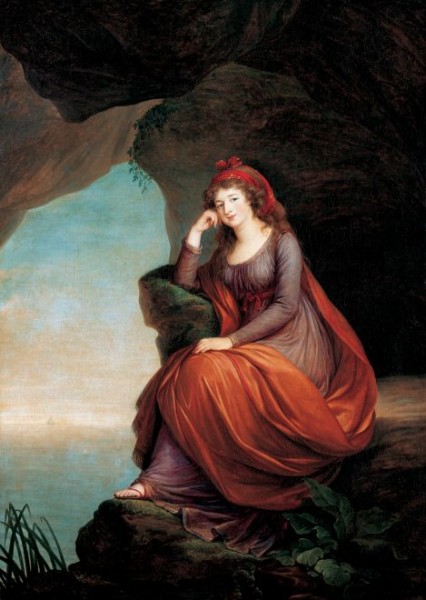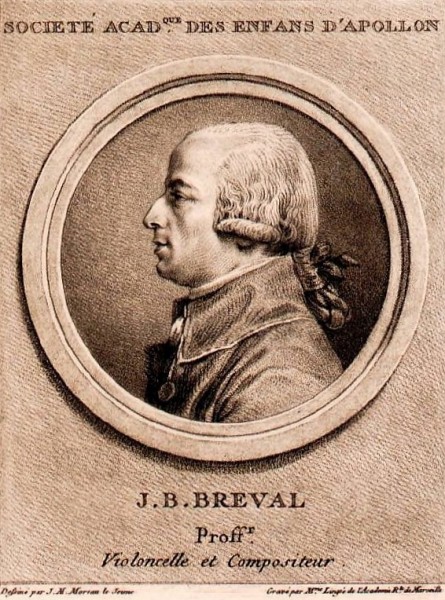
Haydn & Friends
Online premiere: March 17, 2022 at 8pm ET
Program curated by Elisa Citterio
Joseph Haydn (1732–1809)
Trio in G Major, op. 53, no. 1 (1790)
Allegro e innocente – Presto
Elisa Citterio, violin | Brandon Chui, viola | Keiran Campbell, violoncello
Jean-Baptiste Bréval (1753–1823)
Trio in D Major, op. 39, no. 2 (c.1795)
Allegro – Romance: Andante – Rondo
Patricia Ahern, violin | Keiran Campbell, violoncello | Pippa Macmillan
Luigi Boccherini (1743–1805)
Quintet in D Major, op. 39, no. 3 (1787)
Allegro vivo – Pastorale: Amoroso, ma non lento – Finale: Presto
Elisa Citterio & Patricia Ahern, violin | Brandon Chui, viola | Keiran Campbell, violoncello | Pippa Macmillan, double bass
Franz Danzi (1763–1826)
Bassoon quartet in D Minor, op. 40, no. 2 (c.1814)
Allegro – Andante con moto – Minuetto & Trio – Allegretto
Dominic Teresi, bassoon | Elisa Citterio, violin | Brandon Chui, viola | Keiran Campbell, violoncello
Elisa Citterio & Patricia Ahern, violin
Brandon Chui, viola
Keiran Campbell, violoncello
Pippa Macmillan, double bass
Dominic Teresi, bassoon
Program Notes
By Charlotte Nediger
%20by%20Thomas%20Hardy.jpg)
Portrait of Joseph Haydn (1791) by Thomas Hardy
Joseph Haydn’s extensive catalogue of chamber music includes a number of string trios, most related in form and character to the divertimento: music that was written to entertain both the listener and the performers. Unique in this catalogue are three trios for violin, viola, and violoncello issued by one of Haydn’s German publishers, Johann André, in 1790. They are arrangements, presumably by Haydn himself, of three piano sonatas he had composed for Princess Maria, the young bride of Prince Nicholas Esterházy, grandson of Haydn’s employer Prince Nicholas I (Sonatas 40–42). The first of the three sonatas opens with a delightful movement marked Allegretto innocente, and indeed its simple, lilting tune sets a tone of naiveté, leading to series of almost flirtatious, yet tasteful, variations. All three sonatas are but two movements long, eschewing a middle slow movement. The sonatas were written in 1784, and Haydn had devoted much of the previous decade to writing opera. One can imagine the antics of the capricious characters of a comic opera in the whimsical writing of the sparkling Presto. As to the arrangement for string trio, a viola replaces the more usual second violin as its range easily covers the middle voice in the piano writing.
Princess Maria Esterházy went on to become an ardent patron of Haydn, and for several years commissioned him to write a Mass for her name day, thus inspiring six of Haydn’s greatest Masses. A few years later she asked Beethoven to take up his pen for the occasion, resulting in the Mass in C Major. If the three sonatas/trios played a small part in inspiring this patronage, then the delight we have in hearing them is enhanced by knowing what what was to ensue.


Portrait of Princess Maria Josefa Hermenegilde von Esterházy (1793), by Elisabeth Louise Vigée-LeBrun (Liechtenstein Museum)
Portrait of J.-B. Bréval (c.1790) by Thérèse Eléonore Lingée, after Jean-Michel Moreau (Bibliotheque nationale de France)
By coincidence, the three other composers represented in this program were all cellists, with active careers as performers. Jean-Baptiste Bréval held a series of orchestral positions in his native Paris, and appeared as soloist and composer at the Concert Spirituel and various other concert societies. Towards the end of his career he was overshadowed by younger players who were keen to push the boundaries of cello technique. As a composer he came to be thought of as a little old fashioned, his music remaining elegantly classical even as others were experimenting with more romantic expression. The Trio in D Major is from the last of four trio collections published in Paris as Opus 39. It is unusually scored for violin, cello, and double bass, and the cello part is marked “Violoncelle principale.” It is very much a solo for cello, accompanied by violin and bass.
%20by%20Pompeo%20Batoni%20(National%20Gallery%20of%20Victoria).jpg)
Portrait of Boccherini (c.1764–67) by Pompeo Batoni (National Gallery of Victoria)
Luigi Boccherini was born in Lucca, Italy in 1743, the son of a cello and double bass player. After a period of cello study in Rome, he and his father went to Vienna to take up positions in the court theatre orchestra. He returned to Lucca in 1764, but left soon after on a concert tour which took him eventually to Paris, and finally to Spain, where he was to take up residence. The Infante Don Luis employed him as both composer and cellist, and he also enjoyed the patronage of several “Signore Dilettanti di Madrid,” among them Lucien Bonaparte, French ambassador, and the Marquis Benavente. Furthermore, King Frederick William II of Prussia, a keen amateur cellist, provided Boccherini with a regular salary for many years in return for a supply of new music.
The Infante had married a commoner, and hence was largely kept away from the court in Madrid. This shaped Boccherini’s career in that he was somewhat isolated from the world of the opera and ballet, and focused instead on the performance and composition of chamber music. He composed some 100 string quartets, but perhaps his greatest contribution are the over 140 quintets. The norm in string quintets was to add a second viola to the usual quartet, but Boccherini favoured adding a second cello, famously giving a particularly prominent part to the first cellist. The first cello parts are often very demanding, undoubtedly written to be played by Boccherini himself. This is evident in the three quintets, Opus 39, but although the first edition retains the usual scoring, Boccherini’s manuscript score has the lowest part played by a double bass rather than a second cello. He goes so far to label it “contrabasso obbligato,” suggesting that it is not simply an alternate orchestration necessitated, for example, by the absence of a second cellist, but rather a specific colour that he required, grounding the sound of the ensemble.
%20by%20Francisco%20de%20Goya%20(Fundaci%C3%B3n%20Bartolom%C3%A9%20March%2C%20Palma%20de%20Mallorca).jpg)
Portrait of Duchess of Benavente-Osuna (c.1785) by Francisco de Goya (Fundación Bartolomé March, Palma de Mallorca)
The Opus 39 quintets are dedicated to María Josefa Pimentel, Duchess of Benavente-Osuna, an influential member of the Spanish Enlightenment. She established a renowned literary salon at her palace, and was an early feminist and avid gardener. Among the artists she supported was Francisco Goya, who painted portraits of her and of her family, and from whom she commissioned a series of paintings on the subject of witchcraft. Perhaps Boccherini performed the quintets at one of her salon gatherings, leaving us to imagine what conversations they might have enjoyed. They are written with Boccherini’s trademark grace, charm, wit, and energy. Although he often incorporated Spanish elements in his music, the third quintet seems to be decidedly Italian in style, especially in the middle Pastorale, which echoes the pastorale he would have heard in Lucca as a child.
%20by%20Heinrich%20Eduard%20Winter%20(Biblioth%C3%A8que%20nationale%20de%20France).jpg)
Portrait of Franz Danzi (1817) by Heinrich Eduard Winter (Bibliothèque nationale de France)
The cellist Franz Danzi was born in Schwetzingen in 1763, and at age 15 joined the renowned Mannheim orchestra. In 1784 he replaced his father as principal cellist in the Munich court orchestra. By this time he had studied composition, and was particularly keen on opera. He went on to hold positions as Music Director in Stuttgart and Karlsuhe, enjoying some success with opera productions and as a poet. He is, however, best remembered for his chamber music, much of which was published by the same publisher, J. André, who championed Haydn’s chamber music. The three quartets issued as Opus 40 in 1814 are unusually scored for violin, viola, bassoon, and cello. Like Bréval, he was criticized for not embracing the new romantic style, though there are a few little hints of what was to come in this intriguing trio, and the pairing of the violin and bassoon in much of the musical dialogue adds a certain charm. The second movement Andante is a set of variations in which all four instruments take turns stepping forward with their offerings. The final movement is interrupted midway through by a somewhat rudimentary fugue, a short glance back some hundred years, before returning to its lyrical opening.
